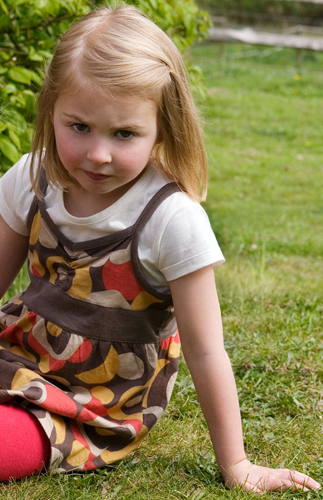Behavior and consequences
The previous
sections have explained the principles of “praise good behavior; ignore
bad behavior.” This section introduces “time out” as a more extreme form
of “ignoring.” It should only be used occasionally, but can be
extremely effective. Remember, also, to keep an eye on the A,B,C, of your child’s behavior. Look at A:
what was happening immediately before the bad behavior struck. Can you
alter something at that point, rather than having to focus on the Behavior and the Consequence every time?
When your child behaves in a
certain way, you will either do something or give her something to
reinforce the behavior; or you will stop doing something or take
something away that will decrease her behavior. The ideal is to reward
and reinforce good behavior and to stop rewarding bad behavior. Under
pressure, it is easy to inadvertently do this the other way around. The
difficulty is that bad behavior often triggers your attention, which has
the effect of reinforcing and encouraging the behavior. For example, a
tantrum will get your attention; or a child hitting a sibling who picks
up her toy may mean that the hurt sibling is taken away, leaving the
misbehaving one rewarded by not having to share.
The strategies to focus
on for this age group are positive reinforcement (rewarding and praising
what you want to see more of) and negative punishment (ignoring,
removing attention, and taking away favored things, as a consequence of
the behaviors you don’t want to see).
Positive reinforcement
Giving something
positive to your child means the behavior—good or bad—will increase.
(Selma’s mom is on the phone, so Selma throws her drink. Mom’s focus
switches to her, so Selma is more likely to do it again. By ignoring
Selma, she will learn not to do this again.)
Negative reinforcement
Taking away
something negative leads to an increase in the behavior. (Juan is
waiting to leave the table. He says, “Down please.” Mommy lifts him down
and praises him for asking nicely. By removing the wait and Juan’s
frustration she has reinforced the effect of asking nicely and has made
it more likely that he will ask again in future.)
Positive punishment
Experiencing something
unpleasant leads to a decrease in the behavior. These experiences may
include lessons that children tend to learn for themselves, even if the
experience itself is not positive. (Mommy tells Tilly not to touch the
barbeque because it is “hot” and “ouch”. Tilly touches it anyway, and
burns her hand. The painful blisters serve as a positive reminder for
Tilly, who is very unlikely to touch it again in the future.)
Negative punishment
Removing something positive reduces the behavior. (Louis is playing Snap, but screams when he loses and tears up a card. Louis is removed from the game and the others continue without him.)
Attention seeking
Your attention positively reinforces both desirable and unwanted
behavior. Try to reinforce the desirable and ignore the unwanted.

The problem with spanking
Spanking and other forms
of physical abuse are very problematic as a means of behavior control
because they are not effective and they also inflict pain. Spanking
tends to set up ever-escalating patterns of punishment, which lead
potentially to very negative and damaging ways of adult and child
interaction. Spanking represents adult frustration and most parents feel
guilty afterward. Spanking your child also sends her the message that
hitting when angry is okay, and so your child will then copy you and
hit, too. The message is further confused if the parent combines hitting
with telling a child that she is loved.
Behavior techniques for 3-4-year-olds
Up until now the main
focus has been on distraction techniques and removing your child from a
potentially volatile situation. Children from age three and upward are
better able to understand that their behavior will have consequences
(whether good or bad). You can therefore use her awareness of those
consequences to help manage her behavior. Toddlers still have an
underdeveloped idea of time at this age and so any consequences will
need to be made clear, consistent, and immediate, otherwise they will
lose their impact. There is no need for lots of words or explanations at
this age. You are the adult and if you say “No” then your child needs
to learn to respect that you mean it. Parents can struggle with this,
since they often feel uncomfortable being so direct and bold with their
child. However, clarity doesn’t need to mean coldness.
Try to avoid asking
your toddler to do something at this age as that may lead to another
tussle if she refuses. Simply state an expectation in a positive and
directive fashion and add a time limit: for example, say, “Lucy, go and
kiss Grandpa goodnight and then off you go to bed.”
Why discipline and control are important
Behavior management is
not just for the convenience of parents; learning self-control is vital
for your child’s social development and personal safety. It is the first
step toward teaching children about wider responsibilities and begins
their moral development. Children need to learn that what you say goes,
in order to keep safe and learn about danger.
Self-control is
important for a contented home and social life, too, since a “difficult”
child is more likely to be socially isolated or labeled, which may lead
to problems in coping at the playground and a higher risk of being
rejected by peers. Knowing when to be compliant and when to listen will
improve your child’s social skills and her ability to concentrate, as
well as her self-control. This will give her a better chance of settling
in at school.